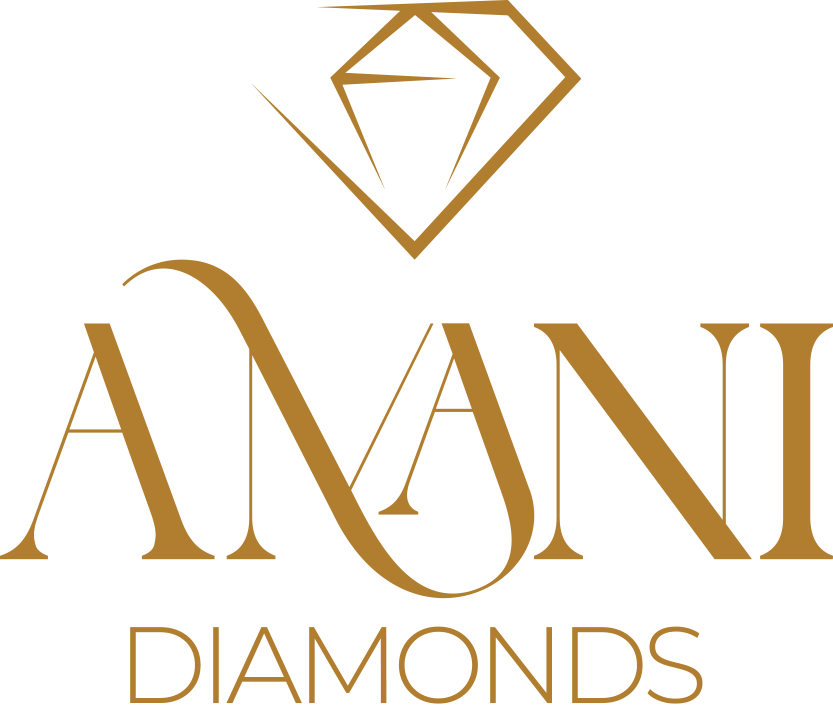Our guide to purchasing your Amani Diamond.
Acquiring a diamond can be both thrilling and daunting. In today’s information-rich landscape, navigating through the plethora of available data to grasp the essence of each diamond and make a choice can be challenging.
You might be familiar with the 4 C’s – the crucial components defining a diamond’s character, influencing its appearance, texture, and value. At Amani Diamonds, we’ve compiled a comprehensive guide to assist you through this process.
But first, what exactly is a diamond? A diamond comprises solely of carbon, formed deep beneath the Earth’s surface under immense heat and pressure, approximately 100 miles below. As carbon undergoes these extreme conditions, it crystallizes and is eventually transported to the surface. Upon extraction, it is entrusted to skilled diamond cutters who transform the raw gem into the splendid masterpiece we admire.
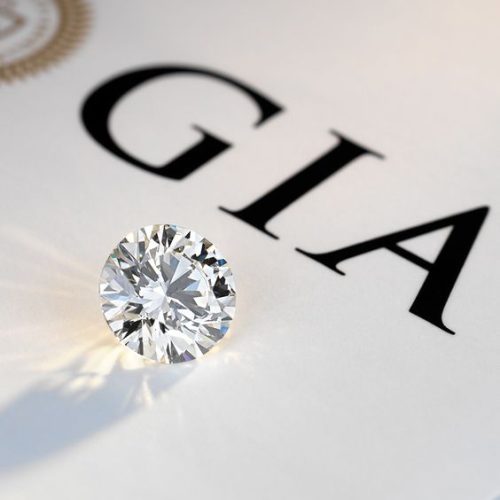
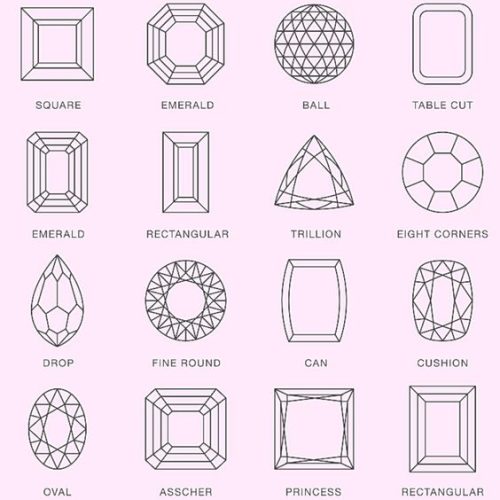
Diamond Cut
The diamond cut essentially refers to how well the stone is proportioned and how precisely the facets are positioned on the diamond. When light penetrates a diamond, it reflects back to our eyes, revealing various optical characteristics.
The primary ones include:
- Brilliance: This is the white light observed when viewing a polished diamond face-up.
- Fire: This refers to the coloured light visible when looking at a polished diamond face-up.
- Scintillation: It encompasses the overall play of light when the diamond, light source, or observer moves. It also involves the interplay of fire and brilliance patterns observed when looking at a polished diamond face-up.
If a diamond is poorly cut, light will pass through the stone without being refracted back to our eyes. As a result, the diamond will appear dull and lacklustre. Conversely, a well-cut diamond will reflect light back to us, showcasing the sparkle and vitality we desire in our diamonds. Below is an illustration demonstrating how light travels through a diamond.
Here are five different grades for the Cut of the Diamond:
Ideal or Excellent Cut: Representing the pinnacle of diamond cuts, these diamonds are exceptionally rare and of outstanding quality, reflecting nearly all the light that enters them.
Very Good Cut: Similar to an Excellent cut in terms of light reflection, these diamonds offer almost the same brilliance at a slightly lower price point.
Good Cut: Reflecting the majority of light, a Good cut diamond appears as beautiful as Very Good or Excellent cuts to the untrained eye, yet it is more affordable.
Fair Cut: While reflecting only a small portion of light, Fair cut diamonds are still considered of decent quality. They prioritize total carat weight and can offer good value for money.
Poor Cut: Diamonds with a Poor cut lose significant amounts of light due to being cut too deeply or shallowly, resulting in a much lower price compared to other grades.
The shape of the stone and its final cut can significantly impact the price. If you’re uncertain about which shape or cut suits your budget best, please feel free to consult one of our Gemmologists for advice on selecting the right stone.
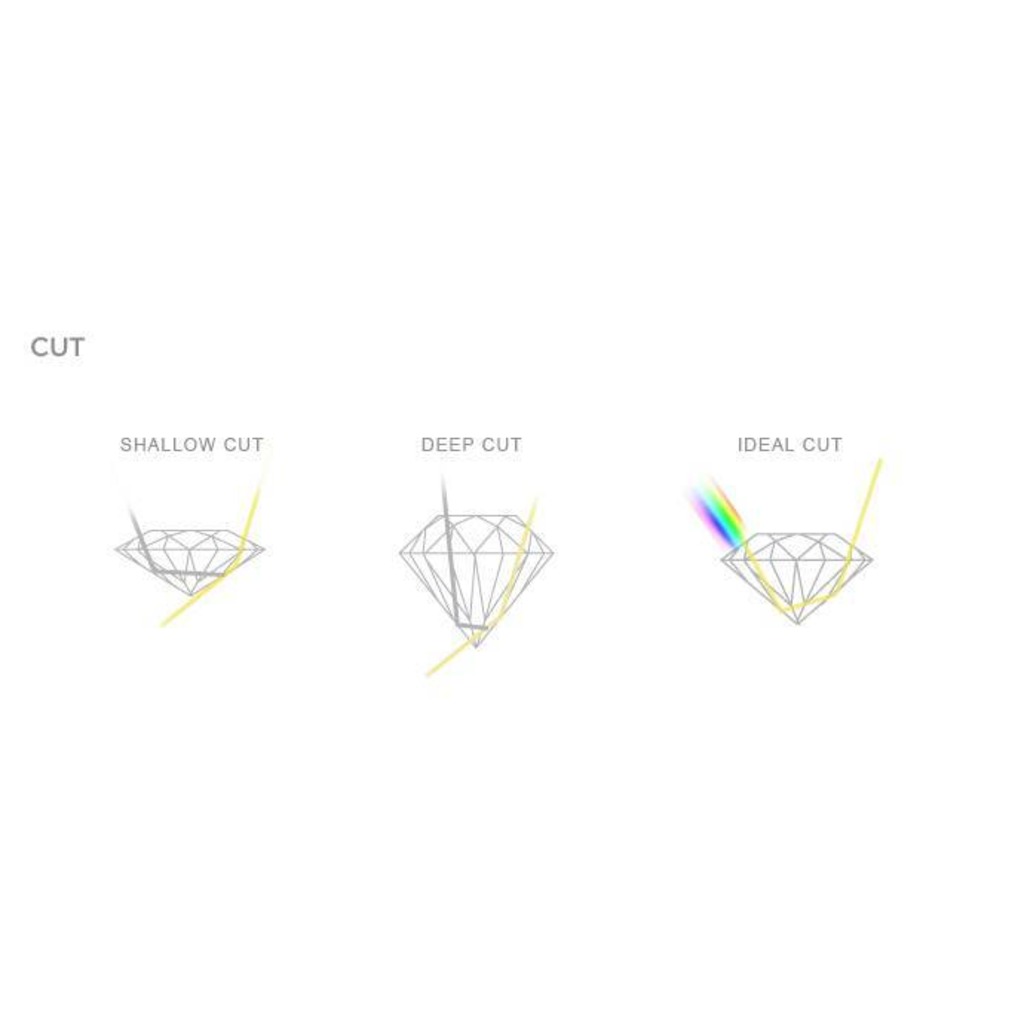
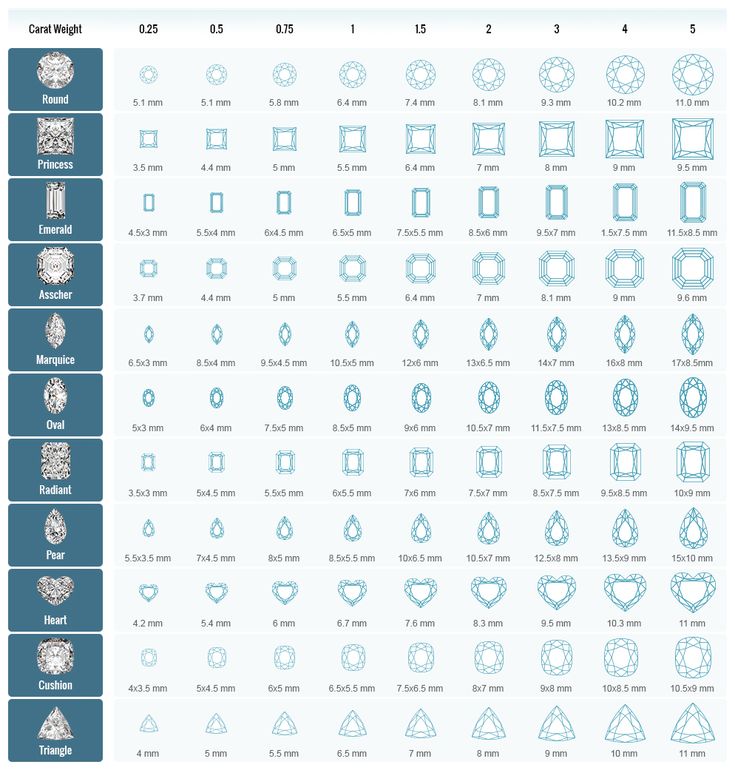
Diamond Carat
Carat refers to the overall weight of the diamond, with one diamond carat denoted as 1.00ct and divisible into 100 points. You might have encountered terms like “a quarter carat” or “a half carat,” indicating the diamond’s weight in points, such as 0.25ct or ¼ carat. Certain carat weights carry a premium price; for instance, purchasing a diamond exactly weighing 1.00ct can be considerably more expensive than one weighing 0.99cts despite being identical in every other aspect.
It’s essential not to confuse the diamond’s weight with its measurements. While there is a correlation, estimating weight solely based on measurements isn’t accurate, as other factors influence the overall weight. The following chart provides examples of weight and measurement, but remember, while larger diamonds generally hold higher value, the other 3 C’s can also impact the price.
Please note that this chart is not to scale and may vary depending on your screen size and resolution, among other factors.
Diamond Colour
Diamond colour refers to how colourless a diamond appears. It’s important to distinguish diamond colour from Fancy Coloured Diamonds, which are diamonds containing elements other than carbon.
By default, diamonds are colourless unless they contain trace elements that impart hues such as red, yellow, green, or blue, among others – these are referred to as Fancy Coloured Diamonds. Colourless diamonds are also termed White Diamonds. However, why do some appear white while others show shades of yellow?
During diamond formation, various natural phenomena can occur, affecting its growth. For instance, if the earth shifts, it can alter the direction in which the crystal lattice structure forms, consequently influencing light refraction and resulting in a more yellowish hue instead of clear.
When grading diamond colour, a set of diamonds known as the “Master Stones” is used as reference points.
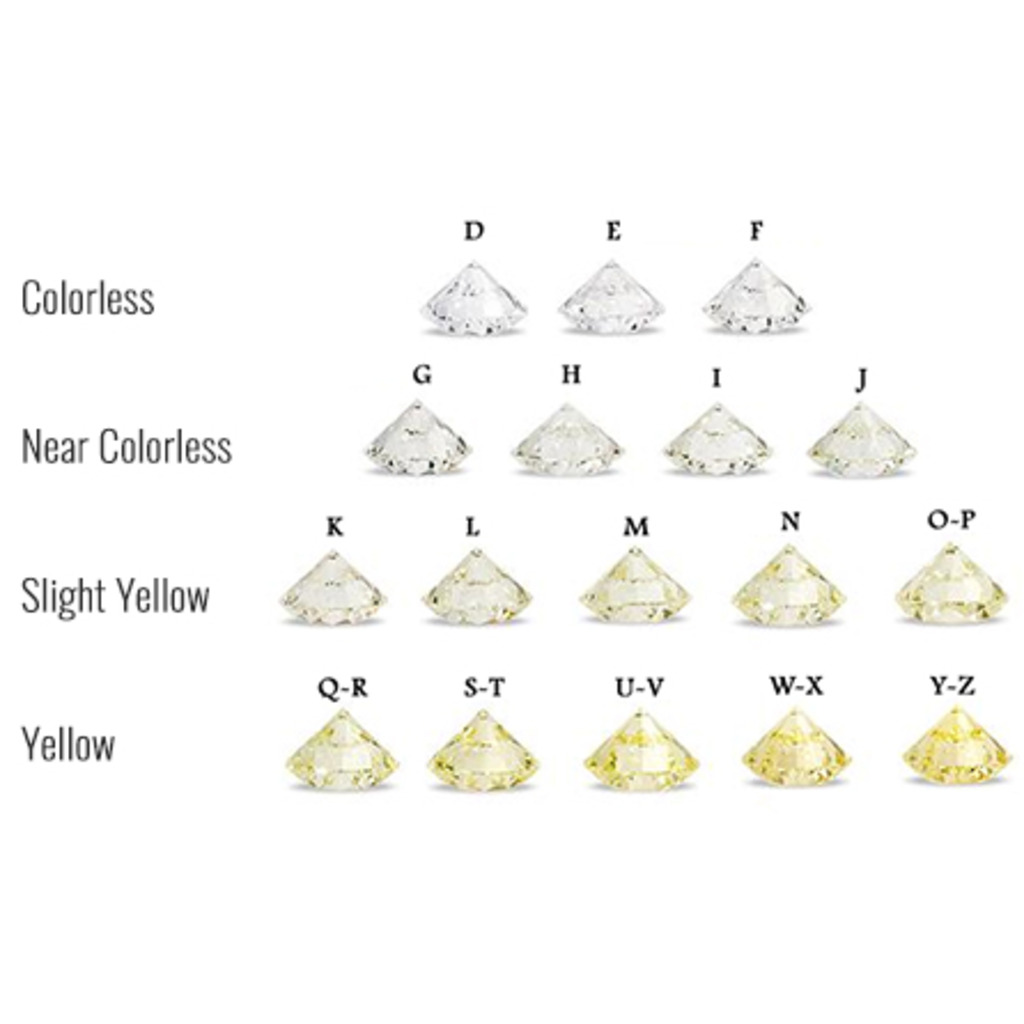
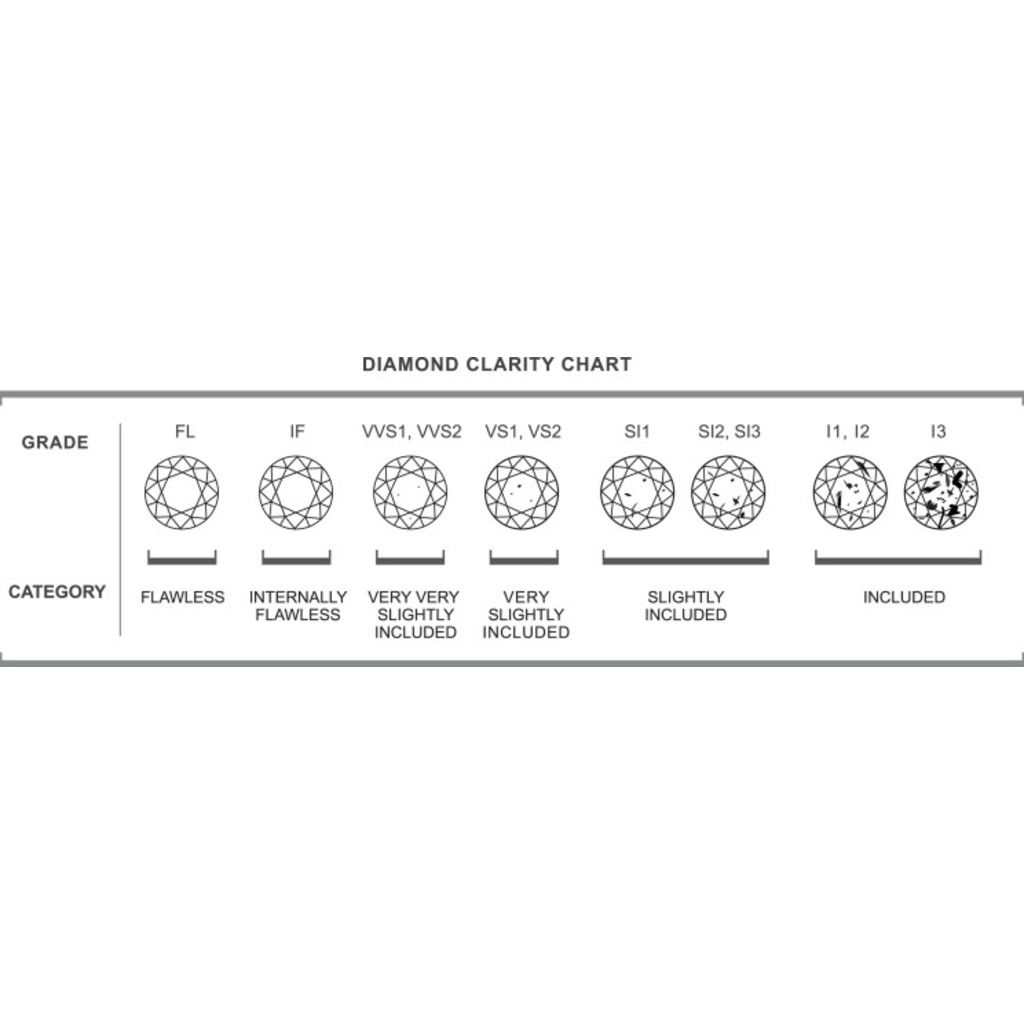
Diamond Clarity
Clarity refers to the presence or absence of inclusions within or on a diamond. It significantly impacts not only the diamond’s appearance but also its price, making it a crucial factor in diamond selection.
- The quantity of inclusions.
- The size of the inclusions.
- The nature of the inclusions.
- The position of the inclusions.
- The colour of the inclusions.
Each factor is meticulously examined under 10x magnification to determine the appropriate grade. The following clarity categories can affect both the appearance and price of your diamond:
- FL-IF: Flawless or Internally Flawless. No internal inclusions.
- VVS1-VVS2: Very Very Slightly Included. Very difficult to detect under 10x magnification.
- VS1-VS2: Very Slightly Included. Inclusions may be visible under 10x magnification and, in some cases, with the naked eye.
- SI1-SI2: Slightly Included. Inclusions are visible under 10x magnification and may also be seen with the naked eye.
- I1, I2 & I3: Imperfect. Inclusions are clearly visible under 10x magnification and with the naked eye.

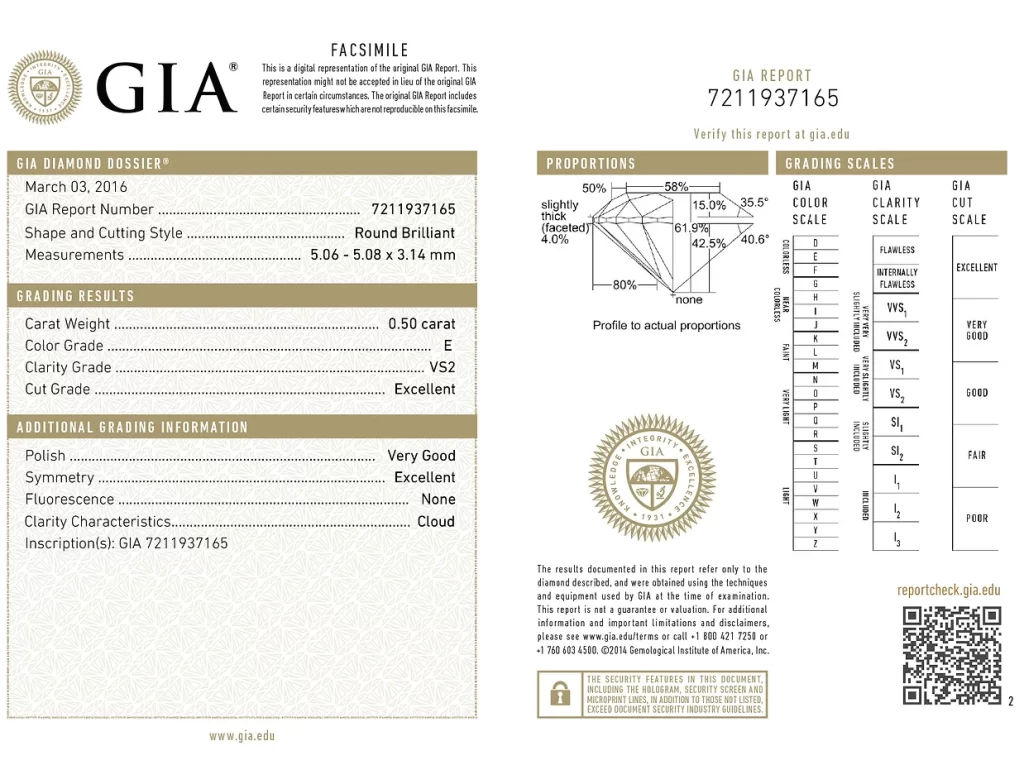
The 5th C – Certification
After exploring the four primary factors crucial for diamond selection, you’ll be well-prepared to purchase your dream piece. However, there’s one final consideration when acquiring a diamond, and that is Certification.
A Certificate is a document that provides a comprehensive overview of the diamond’s essential characteristics in an easily understandable format. While there are numerous diamond grading institutions worldwide, the most reputable and widely recognized are the Gemmological Institute of America (GIA) for mined or natural diamonds, and the International Gemmological Institute (IGI) for lab-grown or ethical diamonds. These organizations play a crucial role in safeguarding both buyers and sellers by establishing and upholding high and consistent standards for diamond grading.
GIA and IGI certificates cannot be replaced if lost, stolen, or damaged. However, if you have a record of your GIA or IGI number, you can access and download a PDF copy from their websites at no cost.
